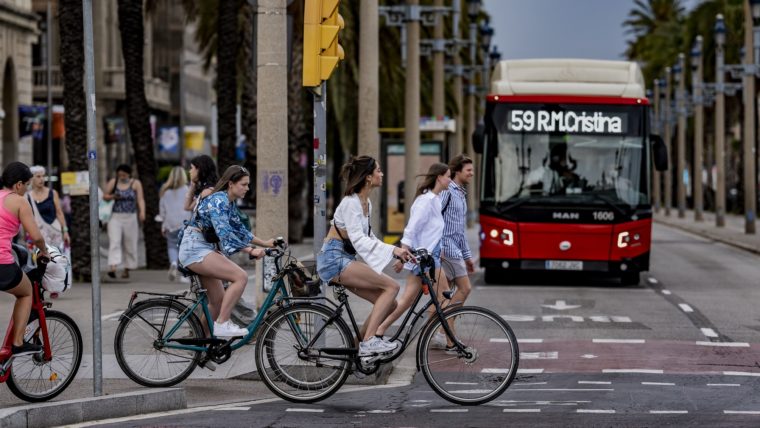The recent session of the Mobility Pact in Barcelona marked the unveiling of the 2023 modal share data, highlighting a significant shift towards sustainable modes of transportation. Laia Bonet, the deputy mayor, proudly announced that private transport now represents less than 20% of all journeys, while over 80% are made through sustainable means, including walking, public transport, cycling, and scooters. This announcement coincided with the launch of a new website showcasing mobility data.
Trends in Modal Share Over the Past Decade
Comparing the current modal share to figures from a decade ago, we witness a notable increase in walking and cycling, while public transport and private vehicle usage have slightly decreased in prominence. Walking has seen a particularly remarkable rise, especially during exceptional circumstances such as the pandemic, where it reached nearly 48% of all trips. Cycling and scooter usage have doubled their modal share, and although public transport remains a crucial mode of mobility, its percentage has seen a slight decline. The share of private vehicles has also decreased, albeit gradually, nearing the 20% mark.
Evaluation of the Current Urban Mobility Plan (PMU)
The session also included a preliminary assessment of the current Urban Mobility Plan (PMU), which is set to conclude in 2024. The most notable objective was a 25% reduction in car journeys, a target that the city is on track to achieve. However, the coordinator of Mobility, Ángel Sánchez, admitted that no mobility plan has fully met its goals, highlighting the challenges in influencing people’s travel behavior. Despite significant investments in infrastructure like bike lanes and bus lanes, there remains a preference for private vehicles among some segments of the population.
Response from Stakeholders: Applause and Criticism
Stakeholder responses during the session provided valuable insights into the expectations and concerns regarding the municipal government’s mobility policies under Mayor Jaume Collboni. While representatives from the tourism sector criticized the lack of focus on tourist mobility, others praised the inclusive approach that considers professional and labor mobility. The business community commended the government’s willingness to listen and engage in dialogue, emphasizing the integral relationship between mobility and the economy. On the other hand, advocates for cycling and public transport expressed disappointment in the absence of the mayor from the session and raised concerns about various projects, such as the delayed tram line extension and insufficient support for cycling infrastructure. Representatives of disability rights organizations raised issues regarding accessibility regulations and the affordability of adapted taxis. Additionally, there were inquiries about proposals such as urban tolls to curb pollution and longstanding plans to clear sidewalks of parked motorcycles. The session also saw calls for stricter regulations on drug use in traffic accidents and recognition of coaches as public transport.
Looking Forward: Challenges and Opportunities
As Barcelona continues to navigate its mobility challenges, several key issues and opportunities emerge. The city must address concerns regarding equity, accessibility, and environmental sustainability while fostering economic growth and innovation. The upcoming PMU for 2025-2030 presents an opportunity to reassess priorities and strategies in light of evolving urban dynamics and emerging technologies. Collaboration between government agencies, businesses, advocacy groups, and the community will be essential in shaping a mobility landscape that prioritizes the needs of all residents and visitors. Barcelona’s journey towards a more sustainable and inclusive mobility future is undoubtedly complex, but with continued dialogue, innovation, and concerted action, the city can build a model of urban mobility that serves as a beacon for cities worldwide.
